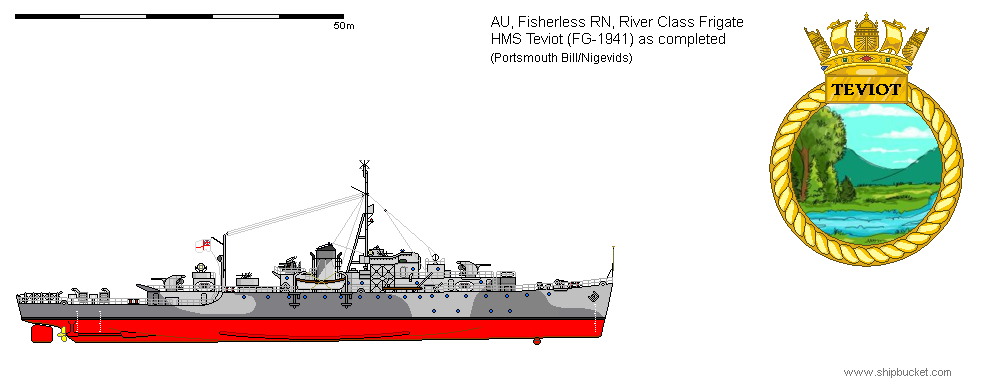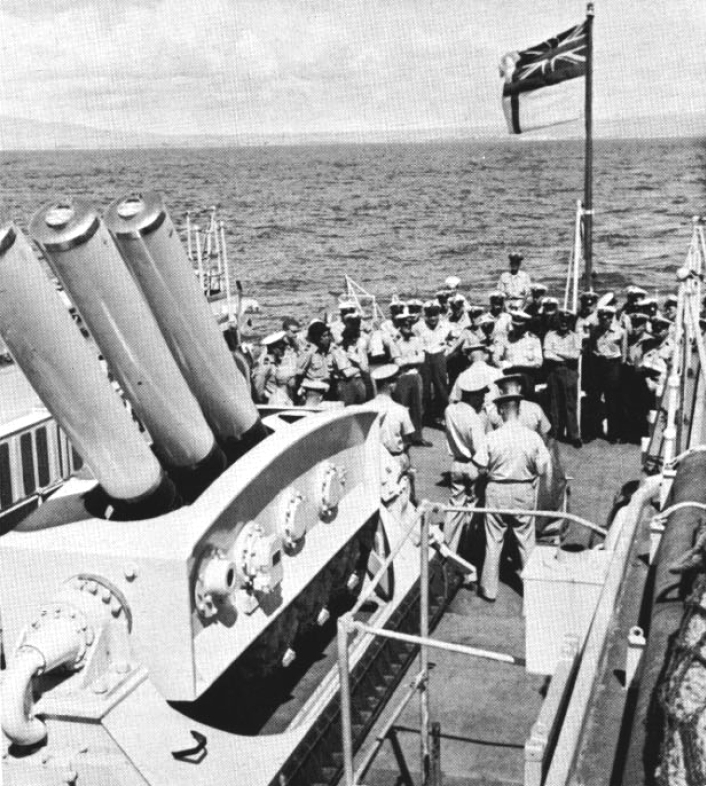
The basic early River class had the two twin 4", a quad 2pd mounting and four single 20mm. What got to sea could be anything from two single 4", a single and a twin 4", a quad 0.5"mg mounting, and any form of single machine guns or cannons. It was very much what was available at the time the ship was being completed. Nothing should stop these escorts from getting to sea and into the Battle of the Atlantic. The first River class came into commission in late 1941 to the harsh realities of the Atlantic in Winter. The River variants went through to 1943, when they were replaced in production by the Bay Class type.
.png)
The placement of the Hedgehog was not ideal as trying to reload the mortar, with its 28 projectiles, in adverse weather, was a diabolical job.

With the Squid mounting fitted to the Loch Class derivatives this was mounted where the forward twin 4" would be which was then placed in the A position with a coffer dam to protect it. The next change was a twin 40mm to replace the quad 2 pounder mounting. 20mm increased from four to six. Probably the most important update was the addition of the 147B Sword horizontal fan-beam active sonar transmitter, to aid the longer ranged Squid mortar.

The British had many new innovations that were maturing at the end of the war. One of which was the Limbo anti-submarine mortar. Squid was loaded manually, which was difficult on a pitching deck in heavy seas with no protection from the elements; in contrast Limbo was loaded and fired automatically, with all the crew under cover. The firing distance of the Limbo mortars was controlled by opening gas vents; rounds could be fired from 400–1,000 yards (370–910 m) compared to the Squid at 250-300 yard range. 10 of the 50 Loch class under order and building were to be repurposed as the Bay Class ships with Limbo. Eventually a further 10 Bay class were completed post war. (I know Limbo did not come into service till 1947+ but that is the beauty of being in an Alternate Universe. The people designing, trialing and proving the Limbo system worked just that little bit harder for me.:) The Bay class were the first ships to dispense wholly with the depth charges in their racks and K guns aft. Interesting statistics for kill rates for ASW weapons, normal depth charges 7-8% chance, Hedgehog 28% chance, Squid 45%, Limbo 70%.

Commander Roger Federer took Largo Bay to sea in March 1945 into the North Sea to try and intercept U-boats still trying to get to and from the Atlantic. Within ten days they had had two contacts and fired on both with the mortar. The first seemed to accelerate and ran away from his ship with an unbelievable burst of speed (subsequently turned out to be one of the new U-2001 class U-boats), while the second presented the perfect solution and the mortar fired a volley, reloaded and was ready to fire a second volley if required, but the sounds from the stricken U-boat was of breaking up noises and Commander Federer had scored an ace with his second serve.

